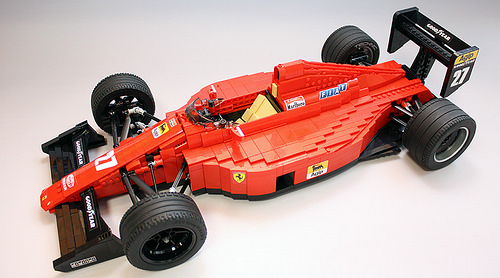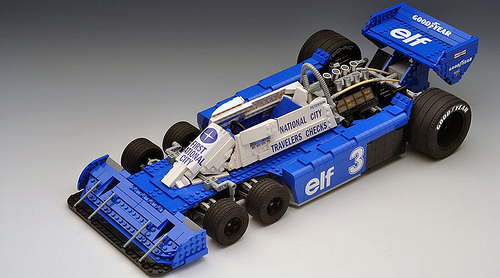The FIA is hardly a bastion of morality, but it has at least outlawed cigarette advertising on racing cars. Unless you’re Ferrari of course. Back in the ’90s though, promoting cancer was so acceptable that Williams not only had Camel cigarettes adorning its 1992 Adrian Newey-designed FW14B, they teamed it with alcohol sponsorship too.
We’re not sure the Camel or Labatt’s logos enhanced the FW14B’s speed in any way, but the money they brought sure helped, and Williams duly won the 1992 Championship – and made Nigel Mansell World Champion – with a then-record 9 race wins.
This brilliant small-scale replica of the title-winning Williams comes from TLCB Master MOCer Luca Rusconi (aka RoscoPC), who is better known for his hugely detailed large-scale Formula 1 recreations. Built using a fraction of the pieces but just as recognisable, Luca has turned his hand to historic racing cars on a much smaller scale, with the advantage of course that these are easier for others to build at home.
Suggested to us by a reader (and past bloggee themselves), Luca’s Williams FW14B is available to view on Rebrickable, where instructions can be purchased alongside those for a host of other famous classic F1 cars. Click here to see all the images and find downloadable building instructions to turn 169 pieces into William’s championship-winning cigarette advertisement.
































